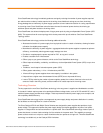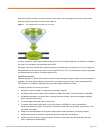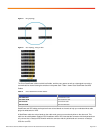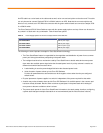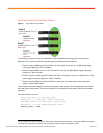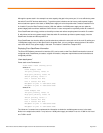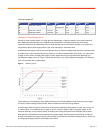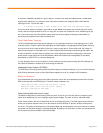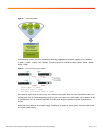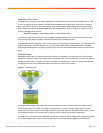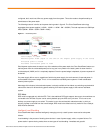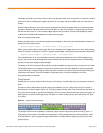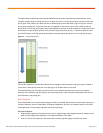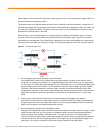
© 2012 Cisco and/or its affiliates. All rights reserved. This document is Cisco Public Information. Page 8 of 17
Although the power stack in the example has extra capacity that gets in the power pool, it is not sufficient to power
the switch D and PoE devices attached to it. To get the system in balance and to have a positive power budget,
we must add more power to the stack; a 350W power supply will solve the problem but it must be installed in slot
A of switch D (see the “Best Practices” section). With the addition of a 350W power supply we can make the
power budget positive and have additional 241W left over in case more power is required by switch B or switch D.
Cisco StackPower technology provides us the ability to share and redirect surplus power from switch C to switch
D, which does not have any power supply. Note that switch D even boots up without a power supply, since the
StackPower allocates and directs power to it.
Cisco StackPower also has the ability to provide redundancy without the extra rack-unit in the rack. By adding one
1100W power supply to any of the open slots in the power stack, you can configure reserved power to be used in
case of the failure of any power supply in the stack. This feature is called Zero-Footprint RPS.
Displaying Cisco StackPower Information
The Cisco IOS Software command-line interface (CLI) can be used to view Cisco StackPower details in terms of
configured mode, StackPower port status, neighbor information, and power requirements as well as default and
configured priorities.
“show stack-power”
Power stack name: Powerstack-1
Stack mode: Power sharing strict
Switch 1:
Power budget: 1646
Low port priority value: 27
High port priority value: 26
Switch priority value: 4
Port 1 status: Not shut
Port 2 status: Not shut
Neighbor on port 1: 0022.bdcf.9200
Neighbor on port 2: 0000.0000.0000
Switch 2:
Power budget: 206
Low port priority value: 19
High port priority value: 18
Switch priority value: 3
Port 1 status: Not shut
Port 2 status: Not shut
Neighbor on port 1: 0000.0000.0000
Neighbor on port 2: 0022.bdd0.6680
The “show env” command can complement the information to obtain the available power sources in the stack.
Notice in the output below, switch 1 only has one 1100W power supply and switch 2 has one 1100W in slot A and
one 715W in slot B.




